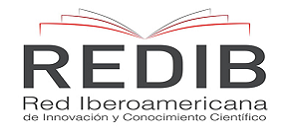Effect of a training program on biomechanical indicators of basketball shooting technique
Keywords:
Biomechanical Indicators, Force Curve, Basketball ScoringAbstract
Objective: To analyze the effect of a training program on biomechanical indicators of basketball shooting technique.
Methods: The design was experimental and the sample consisted of 5 players from the Al-Kahraba club youth team in basketball. An appropriate training program was developed for biomechanical indicators for the stages of the scoring technique (the three steps). The intensity of the load and rest periods were taken into account according to the type of performance and the type of training.
Results: The momentum phase of the first step showed statistically significant improvements (p < 0.05), as did the strength phase (p < 0.05), while the power phase showed no significant change (p > 0.05). The momentum phase of the second step in basketball scoring improved significantly (p = 0.046), indicating the effectiveness of the training interventions.
Conclusions: The study highlights that the steps of scoring showed a great improvement through the application of biomechanical indicators. The training interventions were effective in improving performance in both the momentum and strength phases.
Downloads
References
Amal, J (2008). Principles of Biomechanics and its Applications in Sports Stores. Dar Al-Wafaa, Printing and Publishing.
Ayoum, B., & Sabah, M. F. (2006). Kinematic analysis of shooting skill from the corner and its relationship to accuracy in handball. Dar Al-Wafaa, Printing and Publishing.
Awad Abdel-Qader, E. M. (2009). Biomechanical indicators as a function of exercise mode, skill quality, long jump, Department of Theories and Applications of Field and Track Competition. Zagazig University Press.
Farrag Abdel, H. T. F. (2004). Silver aspects of jumping and vaulting competitions. Dar Al-Wafaa, Printing and Publishing.
Al-Fadhli, S., & Abdul-Karim 1. (2007) Applications of electromechanics in sports training and motor performance. Dar Al-Wafaa, Printing and Publishing
Muhammad, J. M., & Rizkallah Hassan, B. H. F. (2006). The effect of exercises, especially by using an aid to develop the technical performance of the stages of hopscotch and step with the effectiveness of the triple jump. Journal of Mathematical Sciences, 4, 1-12.
Simonian, I. (2003). Fundmenals of sport Biomechanics. Frentice Hall.
Susanka, P. S. (2016). Présentation of bioméchanical (Vol. 1). Cologne: Karlpeter K. K. Olympische Analysen, Berlin.
Hay, G. (2018). Biomechanics of sport techniques (T2U). USA: Games.
Downloads
Published
How to Cite
Issue
Section
License
Copyright and Licensing
For all articles published in Atena Journals, copyright is retained by the authors. Articles are licensed under an open access Creative Commons CC BY 4.0 license, meaning that anyone may download and read the paper for free. In addition, the article may be reused and quoted provided that the original published version is cited. These conditions allow for maximum use and exposure of the work, while ensuring that the authors receive proper credit.
Reproducing Published Material from other Publishers
It is absolutely essential that authors obtain permission to reproduce any published material (figures, schemes, tables or any extract of a text) which does not fall into the public domain, or for which they do not hold the copyright. Permission should be requested by the authors from the copyrightholder (usually the Publisher, please refer to the imprint of the individual publications to identify the copyrightholder).
Permission is required for:
- Your own works published by other Publishers and for which you did not retain copyright.
- Substantial extracts from anyones' works or a series of works.
- Use of Tables, Graphs, Charts, Schemes and Artworks if they are unaltered or slightly modified.
- Photographs for which you do not hold copyright.
Permission is not required for:
- Reconstruction of your own table with data already published elsewhere. Please notice that in this case you must cite the source of the data in the form of either "Data from..." or "Adapted from...".
- Reasonably short quotes are considered fair use and therefore do not require permission.
- Graphs, Charts, Schemes and Artworks that are completely redrawn by the authors and significantly changed beyond recognition do not require permission.
Obtaining Permission
In order to avoid unnecessary delays in the publication process, you should start obtaining permissions as early as possible. If in any doubt about the copyright, apply for permission. Atena Journals cannot publish material from other publications without permission.
The copyright holder may give you instructions on the form of acknowledgement to be followed; otherwise follow the style: "Reproduced with permission from [author], [book/journal title]; published by [publisher], [year].' at the end of the caption of the Table, Figure or Scheme.














